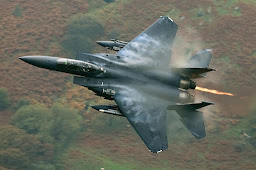On May 1, 1960, an American reconnaissance aircraft Lockheed U-2, on a spy mission by the CIA - Central Intelligence Agency, in the airspace of the Soviet Union, was shot down, causing one of the most famous Cold War incidents. Its pilot, Francis Gary Powers, survived and was arrested as a spy, later being released in exchange for a Soviet spy, imprisoned in the United States.
The May 1960 incident interrupted reconnaissance flights over Soviet territory, considered vital by American strategists. Until then, Americans believed that U-2s were not subject to interception by Soviet fighters, as they flew at about 70,000 feet, well above their service roof.
But Powers' U-2 was shot down by a surface-to-air missile above Sverdlovsk (now Yekaterinburg). It was evident that the high altitude was no longer sufficient protection.
The answer to their concerns came from the design of a reconnaissance aircraft designed by Lockheed's top-secret laboratory "Skunk Works", headed by brilliant designer Clarence "Kelly" Johnson. Intended for the CIA, this aircraft, the A-12, was specifically designed to replace the efficient but slow U-2, also designed by "Skunk Works".
The A-12 surpassed CIA expectations, as it could fly at an incredible speed of Mach 3.35, or more, at about 3,500 km / h at 75,000 feet. Its assumed service ceiling was 85,000 feet, but there is news, still kept secret, about operations that may have reached 100,000 feet. In short, it was simply faster and could fly higher than all the surface-to-air missiles of the day. It also had the additional advantage of being almost invisible to radars, due to its unusual shape and the use of radio wave absorbing materials, and it can be considered justly as the first "stealth" airplane in history. Initially developed at the Lockheed plant in Burbank, just outside Los Angeles, the A-12, YF-12 and SR-71 programs were transferred to a remote test base located in Groom Lake, Nevada, a dry salt lake, a base that it would become world famous for its Area 51 designation. The Edwards base, the Air Force's main test base, was too close to Los Angeles and populated places to maintain the necessary secrecy required by the Department of Defense. Groon Lake is close to the Nevada Desert Nuclear Test Area, and is much more isolated than Edwards, an ideal location for testing these revolutionary machines, without attracting the attention of onlookers and spies.














